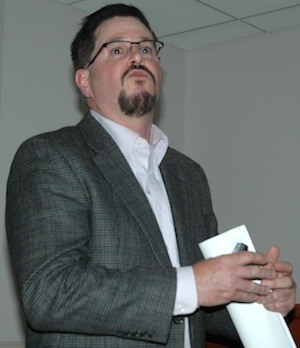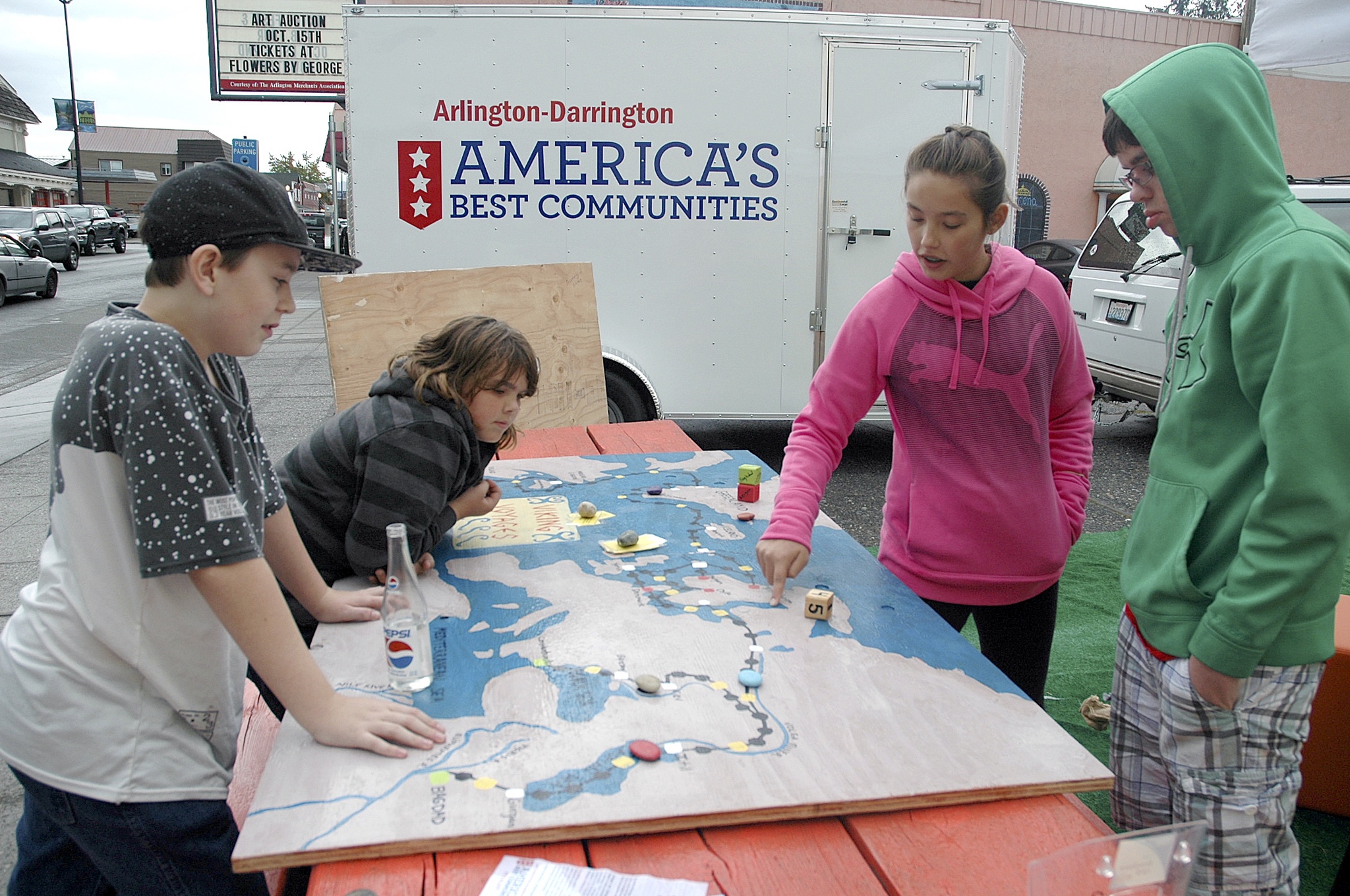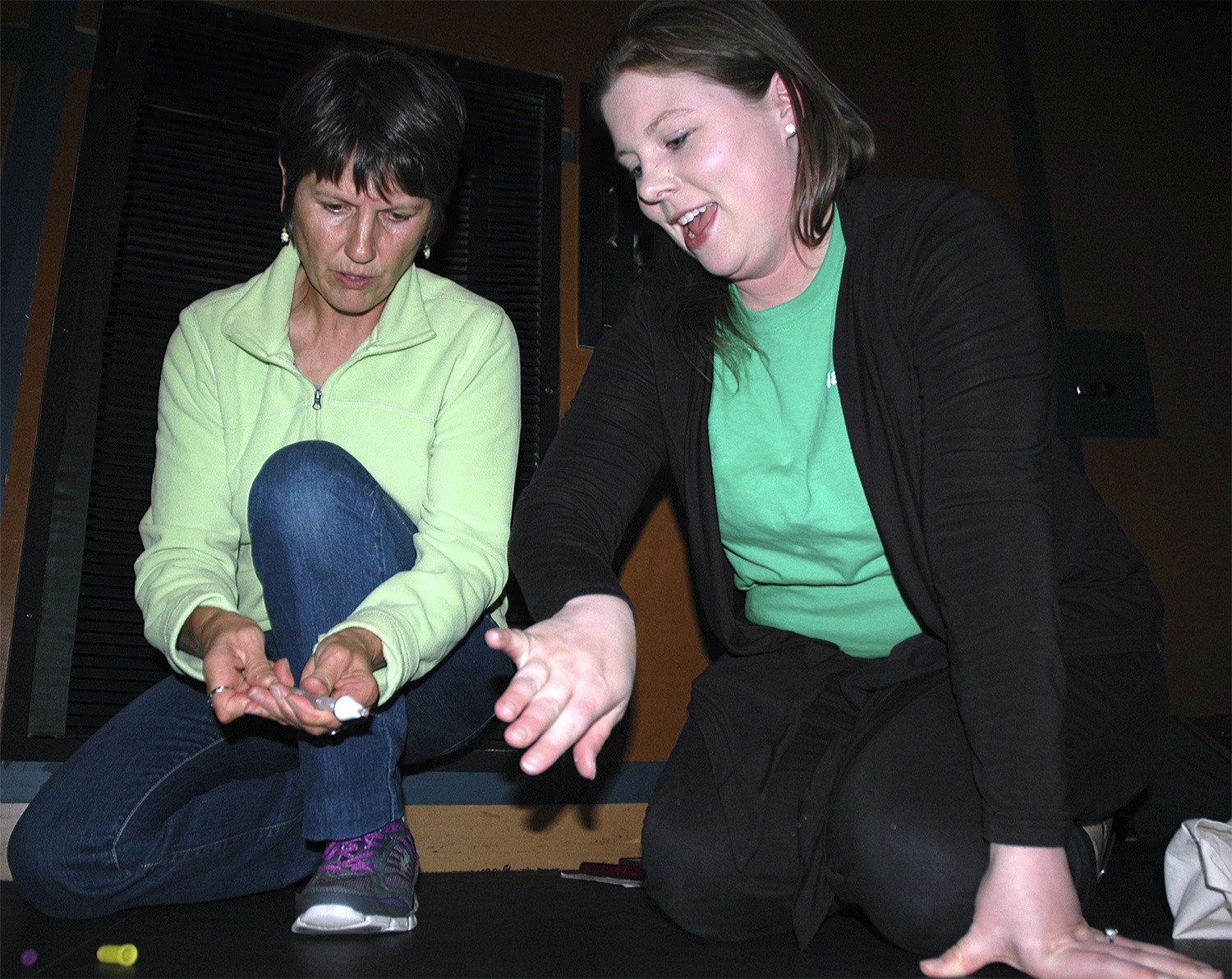SMOKEY POINT — Although Arlington Public Works Director Jim Kelly’s address to the Arlington-Smokey Point Chamber of Commerce June 9 began jovially, with him apologizing in advance because “I’m an engineer, so I love numbers and acronyms,” he was serious about addressing how the city’s transportation infrastructure affects the lives of residents and visitors alike.
Kelly noted that this infrastructure serves not only cars and pedestrians, but also bicyclists and trains.
The city handles 166 lane-miles of roadways, of which half is devoted to higher-traffic arterials and collectors for highways, while the other half is taken up by residential streets, the latter of which handle an estimated 400 cars a day.
Arlington is also accountable for 79.5 miles of residential and commercial sidewalks, which must be made American Disabilities Act-compliant, as well a trail system for bikes and pedestrians.
The Arlington Municipal Airport and the train lines that run through the city are mostly maintained by other agencies — BNSF Railway in the case of the latter — with whom the city has to coordinate its own efforts, as with the recent replacement of the Lebanon Street railroad crossing.
Kelly thanked voters for approving the Transportation Benefit District in 2013, which has collected sales taxes to fund the preservation, repair and improvement of Arlington streets.
“We’re maintaining the roads we have and building new roads to meet our projected growth and potential changes in mobility,” Kelly said. “We take into account factors such as traffic volumes and thirteen years of accident histories. Obviously, the higher the traffic volumes, the more likely you are to have accidents.”
Kelly reported that the Medallion Hotel, where he was speaking to the chamber, sees an average daily traffic of more than 21,000 cars, while Walmart on 172nd Street receives 23,000. Olympic Avenue is lower, but still around 10,000. The city also rates its intersections according to how much time cars spend waiting to pass through.
“The roads that are in the worst condition appear as red on our maps, while the ones that aren’t quite as bad are yellow,” Kelly said. “You might think we’d prioritize the red roads for preservation and maintenance, but those roads are already too far gone. They need to be completely reconstructed. That’s why we focus on the yellow roads.”
Among this year’s transportation-related projects are the already ongoing construction of a new parking lot for Haller Park, two pavement overlays for West Arlington and another overlay for the Jensen neighborhood.
“We’re working with Washington State Department of Transportation to widen 172nd Street, and looking for funding for 173rd,” Kelly said. “The plans for tomorrow start today. We’re updating the comprehensive plan to reflect the growth that’s likely within the next twenty years. This means coordinating with adjacent cities, as well as county and state agencies, because when roads lead out of one city and into another, we have to know what Marysville is doing.”
Kelly explained that the city weighs the level of service that would be increased by a proposed project against the cost of the project, and then seeks out funding, ranging from the Puget Sound Regional Council on the federal level to the Transportation Improvement Board and the Department of Transportation on the state level. Arlington also lobbies the legislature and receives some mitigation funding from developers.







